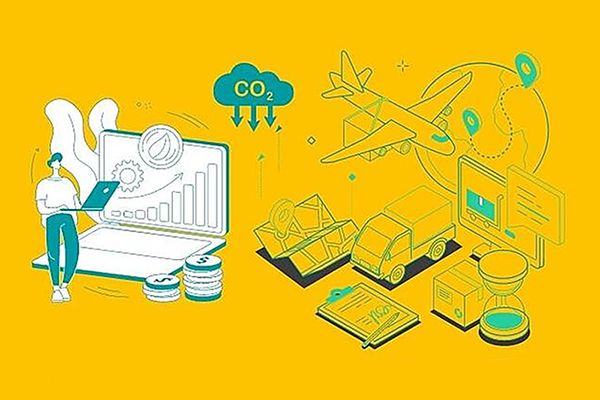Climate Change
One thing is clear when it comes to the state of the planet’s climate: If we wish to meaningfully reverse the effects of climate change, the time for action is now.
The latest environmental IPCC Sixth Assessment Report 2022, draws from over 34,000 studies with sobering findings.
Every region of the world is affected, and even if the world decarbonizes today, drastic climate change impacts will continue to be felt until 2040, particularly in developing economies.
All is not lost, and many businesses are eager to do their part to limit the impact.
There are feasible solutions available; however, most standards occur on a high-level, rather than within operational execution on a real, consistent, and practical level.
So, what challenges hinder sustainability optimization across supply chains, and what steps can be taken to start overcoming these hurdles?
Barriers to Achieving Sustainability in the Supply Chain
While there is general consensus on the urgent need to limit emissions, the path to getting there remains unclear. Global supply chains are uniquely positioned, as the logistics sector is a major contributor to greenhouse gas emissions, and so stands to make a significant, positive impact.
On paper, most corporations have subscribed to achieving various sustainability standards. In fact, 60% of surveyed businesses said sustainability is as important as economic performance. It’s clear that there are benefits such as enhanced brand recognition, or the potential to further innovation while saving costs in the long run.
That said, sustainability violations are not uncommon, as we’ve seen with recent stories around suppliers found to be polluting or employing child labor.
Part of this issue comes from each supplier in the supply chain asking their suppliers to comply with sustainability standards, shifting the burden of responsibility ever-onward.
Lack of supplier diversification also plays a role, as many organizations depend exclusively on suppliers in certain countries or regions, such as in Asia, Latin America, or the Pacific.
Many such countries have unenforced or nonexistent environmental, social, and governance (ESG) regulations, making it difficult for well-meaning corporations to accurately assess or score partners. Many lower-tier suppliers also provide little information about their inner workings around carbon emissions, labor conditions, and other factors – easily making them the weakest link from a sustainability perspective.
That said, these suppliers are often integral from a cost-benefit perspective. As Gartner noted in a recent report on integrating the environment into supply chain planning;
“Many supply chains lack the mechanics to systemically balance cost, cash, service, and sustainability, limiting the inclusion of sustainability to large-scale decisions rather than operational planning decisions that occur every day.”
In fact, according to The Economist Intelligence Unit, the cost is the main barrier prohibiting the adaptation of a supply chain sustainability strategy, followed by the difficulty in monitoring complex supply networks.
To truly make lasting, meaningful, and deeper changes toward sustainable supply chain management, sustainability must be embedded as a priority metric in organizational frameworks and management thinking, alongside cost and service.
Making Sustainability a Staple of Operational Execution
Despite the above barriers, the overarching trend is a positive one. Executives are working to achieve supply chain sustainability, and cloud technology is playing a role in scaling organizations’ sustainability efforts.
When it comes to embedding sustainability as an additional metric, Supply Chain Visibility and Control Tower Platforms can incorporate greenhouse gas emissions directly into supply chain planning. This allows organizations to allocate greenhouse gas emissions (GHG) to shipments and products in all stages (such as pick-up or air transit). Users can input parameters for an order and optimize the product flow in line with EN 16258 regulations and GLEC methodology across all legs, regions, and modes of an order journey. Tracking real-time analytics on CO2 emissions per order allows businesses to execute order flows against the lowest carbon footprint.
Organizations can further embed sustainability as a quantitative metric through carrier scores and factor GHG emissions into carrier selections during the operational planning stage. This is based on factors such as emissions, fuel efficiency, impact, and other non-monetary values, allowing organizations to choose the carrier with the lowest overall score on sustainability impact.
The transportation sector contributes significantly to GHG emissions on a worldwide level; in the U.S., it’s the leading contributor at 27%. With most fuel for transportation coming from petroleum and being used to fuel cars, ships, planes, and other modes of transportation, the potential for businesses to reduce environmental impact within logistics is substantial.
Some Transportation Management Systems (TMS) can merge planning and execution together with features such as smart order consolidation and dynamic route optimization. Systems with multi-modal capabilities can help utilize resources such as trucks more efficiently, considerably lowering the carbon footprint. And with holistic visibility into the end-to-end supply chain, organizations can see across their suppliers and their suppliers’ suppliers to continually improve their strategic order allocation and transportation decisions from a sustainability angle.
On the reverse logistics side, smart returns management provides similar functionalities to smart order and transport planning, providing carriers and customers with the most sustainable and green way of handling returns.
Incorporating sustainability into operational decisions is only one piece of the puzzle, as alignment and shared vision and goals will be required on all levels. The “perfect order” will need to be redefined as not only the best service at the best cost, but the sweet spot between service, cost, cash, and environmental impact. Through wider and deeper visibility, knowledge-sharing, customer feedback, partner performance ratings, and other initiatives can span the entire value chain. Add to that embedded intelligence to optimize according to sustainability metrics, and businesses can start bringing about real, consistent, and lasting results.
The road to supply chain sustainability doesn’t have to be a challenging one. While integrating factors such as environmental impact and GHG emissions into operational planning takes multiple capabilities across supply chain visibility, control tower, order management, transportation management, and returns management, teams don’t need to purchase and install several different systems. The MPO global cloud platform for Multi-Party Orchestration connects systems, people, and processes across the entire business network, providing a single-view platform for the full order lifecycle and its sustainability impact.
You can also get in touch by reaching out to [email protected], [email protected], or requesting a demo today
5 Smart Ways to Reduce Your Carbon Footprint
Greater supply chain visibility, efficiency, and smart returns management are not only better for the environment; they improve operations and offer a unique opportunity for increased value and differentiation to customers.
The MPO Multi-Party Orchestration platform is easy to implement and helps regional and global brands, shippers, and 3PLs make better use of their resources and continuously improve.
Related Resources
The “Multi-Multi” Supply Chain Problem That No One Is Talking About
In this white paper, we examine why the average organization is losing significant profits from supply chain disruptions and why we need to understand the deeper problem to change the outcome. Download Now!
Supply Chain Control Tower & Visibility
This Supply Chain Control Tower and Visibility solution guide provides a deeper look into the platform's capabilities and benefits, as well as a practical overview of why a unified and converged approach will make all the difference in running an efficient and cost-effective supply chain that drives superior customer satisfaction. Download Now!
Multi-Party Orchestration Platform
In this brochure, you'll find a guide to MPO's unified cloud platform for multi-party orchestration, including its rich and flexible solutions: Control Tower, Supply Chain Visibility, Digital Order Management, Transportation Management, Network Inventory Management, Returns Management, Spare Parts Management, and Supply Management. Download Now!
More Resources from MPO
Related Article: What Is Supply Chain Management Doing in 2022?
Article topics
Email Sign Up























